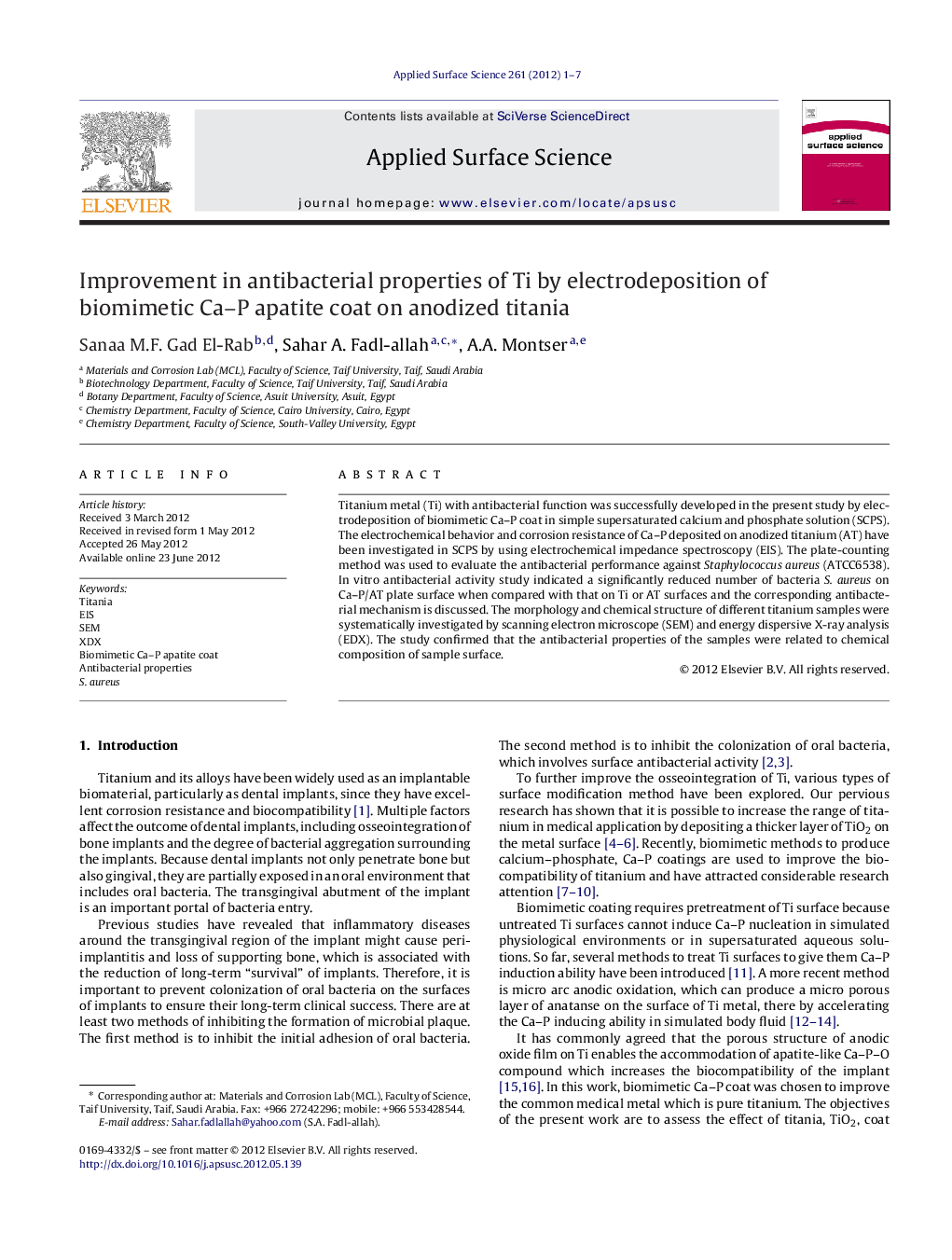| Article ID | Journal | Published Year | Pages | File Type |
|---|---|---|---|---|
| 5364498 | Applied Surface Science | 2012 | 7 Pages |
Titanium metal (Ti) with antibacterial function was successfully developed in the present study by electrodeposition of biomimetic Ca-P coat in simple supersaturated calcium and phosphate solution (SCPS). The electrochemical behavior and corrosion resistance of Ca-P deposited on anodized titanium (AT) have been investigated in SCPS by using electrochemical impedance spectroscopy (EIS). The plate-counting method was used to evaluate the antibacterial performance against Staphylococcus aureus (ATCC6538). In vitro antibacterial activity study indicated a significantly reduced number of bacteria S. aureus on Ca-P/AT plate surface when compared with that on Ti or AT surfaces and the corresponding antibacterial mechanism is discussed. The morphology and chemical structure of different titanium samples were systematically investigated by scanning electron microscope (SEM) and energy dispersive X-ray analysis (EDX). The study confirmed that the antibacterial properties of the samples were related to chemical composition of sample surface.
⺠Ca-P coating on titania titanium surface was directly fabricated successfully by electrochemical deposition. ⺠Treatment the titanium surface by TiO2 could improve the adhesion strength between the Ca-P coating and the surface. ⺠Anodization treatment in phosphoric acid is benefit to inhibit the oral bacteria. ⺠According to the electrochemical corrosion test, corrosion resistance of Ti was improved by both anodization and electrodeposition of the Ca-P/titania coating. ⺠Ca-P/titania sample is believed to be a functional biomaterial which combines antibacterial activity and good corrosion resistance in bioenvironment.
